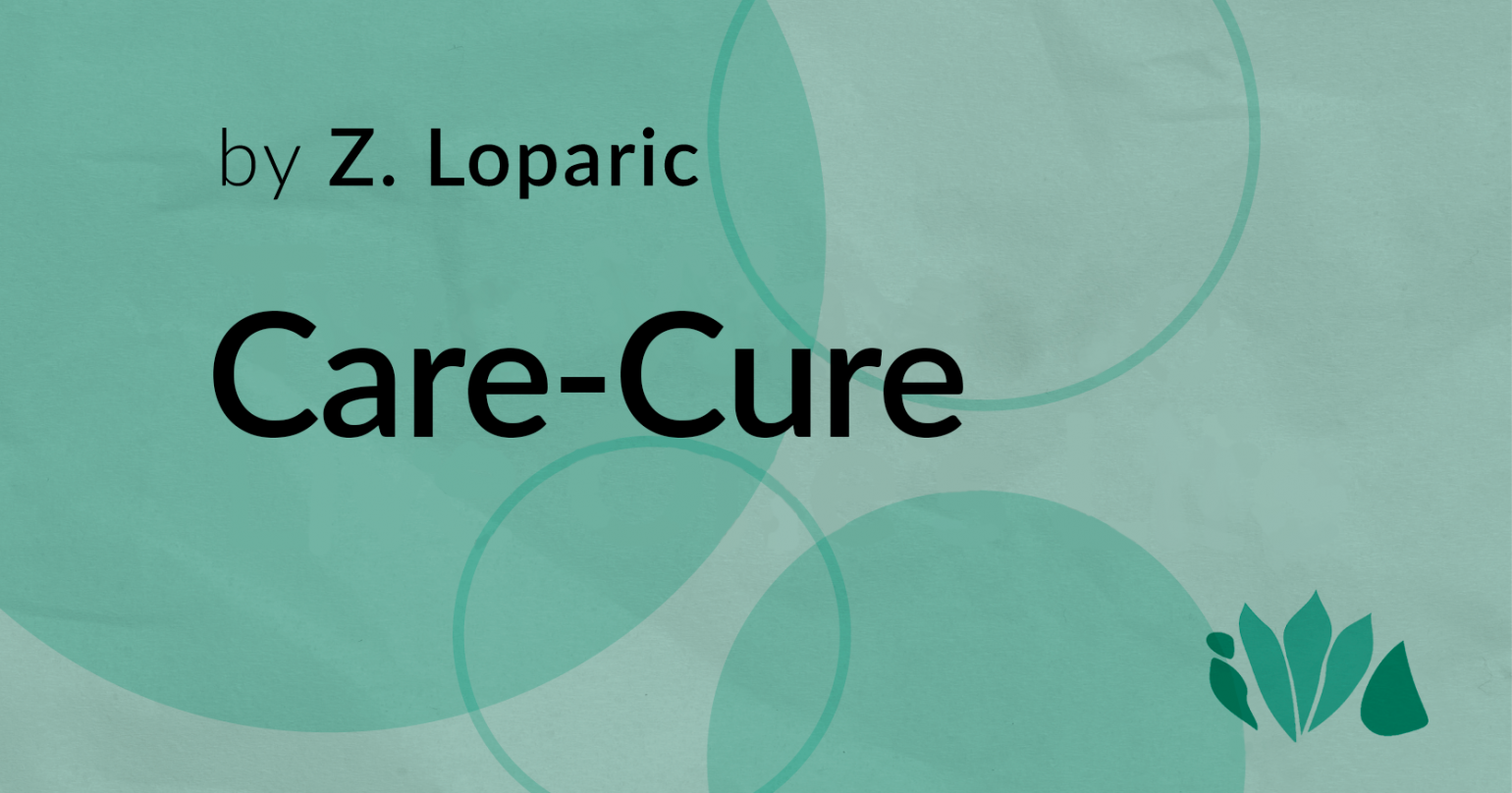Care-Cure
Care-Cure
October 21, 2022
Z. Loparic
In 1971, in the opening lines of a lecture for a meeting in Rome left unfinished, and already quite ill, a few days before his death, Winnicott addressed his last plea to the psychoanalytic community: “I am asking for a kind of revolution in our work. Let us re-examine what we do.”
He duly explains the reasons for calling on fellow psychoanalysts to engage in revolutionary research. He admits there is no dearth of excellent analyses, i.e., excellent interpretations of the repressed unconscious carried out in the professional milieu according to the procedures recommended by traditional psychoanalysis (the “Say everything, without censorship” of free association). However, many fall flat in a decisive point: they fail to address the “dissociations,” the schizophrenic formations hidden in the repression-ridden material of a personality that is only apparently whole. Transference neurosis does not reveal, but conceals, the psychosis. Winnicott’s work provides numerous results from his own revolutionary research that allow us to understand what this means.
Repression, he says, harking back to and modifying tradition, is a defense against an internal conflict that, under certain conditions, arises in children who have established themselves as whole persons, satisfactorily passed through the stage of concern and are, therefore, capable of experiencing ambivalence between love and hate with an oral instinctual base. For boys, it is a conflict between the desire to preserve their beloved father, provider of security and companion in many activities, and the desire to destroy this same father, because he is an obstacle to their sexual desire geared towards the mother. This ambivalence is not constitutional (Klein), but a trait of the acquired personality structure, and generates anxiety. The child finds certain aspects of this anxiety intolerable and begins to erect defenses commonly called neurotic – repression, above all, which gives rise to a special kind of unconscious: the repressed unconscious, i.e., fragments of conscious mental life expelled from consciousness, kept under pressure and ciphered. A special aspect of repression is the inhibition of impulses, the loss of some part of the instinctual component when relating to objects. This constitutes a serious impoverishment of the child’s experience of life.
Dissociation, in turn, is the generic name Winnicott uses in that lecture and elsewhere to refer to defenses against disturbances that do not stem from internal conflicts, but are generated by external factors that intrude upon and affect the maturational process in early life by breaking down defenses already in place to protect the child’s initial contact with the human environment. Thus, dissociation threatens the baby’s relationship with the mother and other people even before the constitution of its whole personality and its capacity to love, hate and experience ambivalence – and, therefore, long before neurotic anxiety can emerge to generate repression and a broad gamut of neurotic defenses.
In particular, the external intrusions strike at the continuity of being and can hamper the infant’s other fundamental achievements (constitution of a unit self, integration in time and space, indwelling in the body, object relations, feeling of being real, abstract intellectual processes, etc.), entailing the threat of annihilation and the infant’s fall into formlessness without opening itself to object relations. This effect cannot be experienced as such. The closest one gets to it are the Winnicottian anxieties, i.e., experiences of agony and struggles to stay in touch, to continue to exist and cease living in an afflictive suspension between life and death, outside the scope of representation, falling forever, in pieces, no longer indwelling in the body, losing contact with other people, etc. These anxieties can be catalogued (and Winnicott makes several lists like the one above), but strictly speaking, they are unthinkable, because they pertain to the madness that belongs to a stage prior to the organization in the self of intellectual processes that can use the catalogued harrowing experiences to generate conscious memory, as Winnicott quite precisely clarifies. Against these anxieties, which cannot be verbalized and, therefore, are not neurotic, the baby can nevertheless erect new defenses – the well-known symptoms of psychosis: active disintegration, false self (that posits itself as real and is taken by observers as the real person), depersonalization (failure to indwell in the body), loss of the sense of real, autistic invulnerability, etc. – that distort and even block the maturational process already overwhelmed by the intrusions.
That is how the Winnicottian pathogenic unconscious is generated, comprising both the Winnicottian “unhappened” (in the external relationship with other humans) and something in the baby that, for lack of facilitation or protection, was not integrated and, therefore, not lived or experienced in the first person singular. This existential flaw is radically different from the Freudian unconscious, which consists of an excess, of what happened in intrapsychic life that should have not.
This unconscious can persist in individuals who achieve a certain degree of personal integration by constituting a false social self, e.g., one involved with managing genital instincts. Borderline patients are one example, in whom the core of the disorder is psychotic, but who remain in possession of sufficient organization to put forth a neurosis, or a psychosomatic disorder, when the psychotic core anxiety threatens to erupt in raw form. In such cases, patients may pursue the defense of making themselves neurotic (rather than mad) – and should be treated as such). In this way, they deny both the non-communication and that their fundamental problem has not been touched upon.
Standard analysis was conceived to break through the resistances, surface repressed fragments of conscious life in the transference, elaborate them (i.e., decipher their meaning), put them back in the proper temporal and causal order of the mental life stream, and subject them to the control of the conscious. In other words, traditional analytic healing is a talking cure.
And precisely here lies the problem that Winnicott pointed out in 1971, which I have reconstructed above: the talking cure does not reach the dissociations, does not enable patients to come in with contact with their pathogenic personal formlessness. One reason is the use of free association, a method that by definition reveals a coherent, instinctually-based theme, a sense, a purpose, a goal. Their achievement, however, is forbidden and, therefore, anguish-inducing. The organization of this non-sense is in itself a defense, as Winnicott rightly diagnoses, just as organized chaos is the defensive denial of chaos.
Furthermore, in standard analysis, the therapist easily ends up colluding with the patient who, by creating a caring false self, denies the non-communication, i.e., the facts of not breaking down and of fearing breaking down. Traditional interpretations of the patient’s false self can be excellent, the only drawback being that they never end. The underlying disorder – the unhappened – does not enter the transference and is not relived in the session, as it would have to for the maturational and healing process to advance. Patients may even resort to a psychoneurotic false self to end the treatment or to express gratitude. However, they know, on some level, that there has been no change in their underlying psychotic state and that the collusion with the analyst will end in failure. It might have been good while it lasted. If psychoanalysis could be a way of life, says Winnicott, one might say that this type of treatment accomplishes what was hoped for. Psychoanalysis, however, is not a way of life. The goal of analysis is different: patients are expected to finish the analysis, forget the analyst and discover that living is itself the therapy that makes sense. As Margaret Little points out, in cases involving existence, survival and personal identity, transference does not develop and the classical form of psychoanalysis proves itself to be ineffective.
Standard interpretations can even be dangerous if applied to cases in which the patient needs to enter into psychotic transference, e.g., into a relationship of profound dependence on the analyst. If there is failure not in what the therapist says, but on what he or she should do – to behave in a way that facilitates the patient’s analytic process (equivalent to the maturational process of the infant and of the child) – the therapist will suddenly become a “not-me” for the patient, knowledgeable of too many things and therefore dangerous, warns Winnicott, communicating much too closely with the quiet and silent central core of the patient’s organization of the self.
Interpretation-based treatment faces another obstacle: the unthinkable and, therefore, non-verbalizable nature of the psychotic’s unhappened unconscious. The reason patients find no relief is that, in the traditional treatment, they strive to remember the madness they would have experienced. In fact, however, they recall and relive instances of madness that resemble concealing memories. The original madness, the breakdown, belongs to a very early stage, prior to the organization in the self of those intellectual processes capable of abstracting catalogued experiences and presenting them for use as conscious recollections. In other words, the madness that needs to be remembered can only be remembered by reliving it in the analyst’s lap.
Another limitation of standard analysis is evinced in cases of antisocial tendencies – theft, lying, aggression against social structures, antidemocratic proclivity – which signal, through antisocial behavior, an abrupt loss of a hitherto sufficiently good environment by fault of the environment itself, as perceived by the patient.
Winnicott concludes that analysis is only for those who need it, want it and bear it; with other patients, he adopts a nonanalytical approach. His works provide numerous elements for reflection on alternatives to traditional therapy. The fundamental point is that, for Winnicott, therapy is no longer reduced to interpreting the repressed unconscious, but rather provides a professional and trustworthy context in which therapeutic work can take place – the work of management, of care-cure, of healing through care.
When treating cases of splitting, for instance, the therapist must recognize and withstand the patients’ situation of non-sense that is communicated in the psychotic transference, offering them, in a specialized setting, the opportunity to experience a state of purposelessness, a kind of continuous ticktocking of the unintegrated personality, without insisting they must organize their nonsensicality. Under these caring, non-interpretative conditions, patients can then resume the maturational process, restore contacts and creatively achieve their goals.
The treatment of antisocial tendencies is not psychoanalysis, but placement, and consists in providing care that will replace lost or missing care, which can then be rediscovered by the child itself, allowing it to reexperience and potentially test its own instincts. Thus, therapy is provided by the stability and management of the new environment.
In essence, care-cure is an extension of the concept of holding, of living with someone, which includes mutuality and cross-identification. It all begins, says Winnicott, with the baby in the womb and continues with the baby in the lap. There is enrichment in the child’s growth process, because the mother who knows this particular baby to whom she gave birth makes this enrichment possible. The facilitating environment that enables personal growth and the maturational process must be a description, Winnicott insists, of the care the father and the mother provide, and of the role of the family. This leads to the construction of social structures, such as the democratic machine, whereby mature individuals, according to their age and ability, take part in their creation, maintenance and, as the case may be, reconstruction. Care is not cure in the sense of healing through medication, but in the sense of care-cure, which could be, says Winnicott, the professional motto of Winnicottian therapists.
About the article: Originally published in Portuguese on July 21, 2022, in the column The place in which we live. An on-line column from the Winnicott Institute in Cult Magazine.

